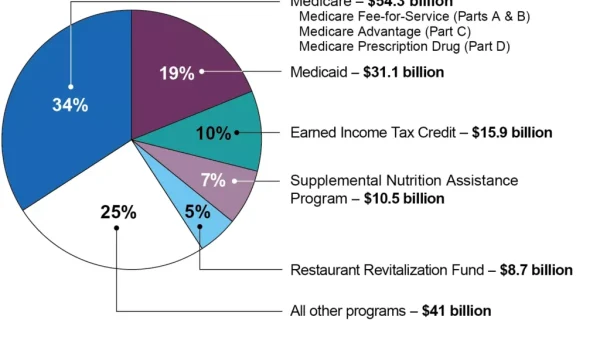After slight deflation in June, prices once again ticked up in July. The Bureau of Labor Statistics reported that the Consumer Price Index (CPI) rose 0.2 percent last month, for a year-over-year increase of 2.9 percent. Core CPI, which excludes volatile food and energy prices, also rose 0.2 percent on the month, and has risen 3.2 percent year-over-year.
The annualized monthly inflation rate was 1.9 percent in July. The annualized monthly core inflation rate was 2.0 percent. Taken together, inflation appears to be in line with the Federal Reserve’s official 2-percent target.
Shelter prices saw the largest increase. They rose 0.4 percent on the month, “accounting for nearly 90 percent of the monthly increase in the all items index.” The estimated increase in the shelter component of CPI, however, likely reflects price pressure from a year or more ago. As Treh Manhertz at Zillow shows, “annualized changes in shelter CPI can remain elevated long after rent price growth cools.”
Using the latest inflation data, we can ascertain the stance of monetary policy. The Fed’s target range for its main policy interest rate is 5.25-5.50 percent. If market participants expect 1.9 percent inflation, in line with the July headline inflation rate, the implied real interest rate target range is 3.35 to 3.6 percent. If they expect 2.0 percent inflation, in line with the July core inflation rate, it is 3.45 to 3.7.
Is the Fed’s interest rate target too high, too low, or just right? We need to compare our estimates of the implied real interest rate target range to the natural rate of interest, which is the price of capital that balances supply and demand in short-term capital markets. We can’t directly observe this rate; the best we can do is estimate it. The latest estimates from the New York Fed put it somewhere between 0.70 and 1.18 percent. Hence, the Fed’s interest rate target range appears to be much higher than the natural rates. Unless the estimates are totally divorced from reality, interest rates suggest money is quite tight.
We also must consider monetary data. The M2 money supply, which is the most commonly cited monetary aggregate, grew 0.87 percent over the last year. It grew at an average annual rate of 5.4 percent over the five year period just prior to the pandemic. Divisia aggregates, which weight money supply components based on their relative liquidity, rose more. Divisia M3 grew 1.30 percent over the last year, compared with 4.5 percent on average over the five years prior to the pandemic. Divisia M4 (including Treasuries) grew 2.10 percent, compared with 4.7 percent in the earlier period. Hence, both simple-sum and Divisia monetary aggregates are growing at historically low rates.
To judge whether monetary policy is loose, it is not enough to show that monetary aggregates are growing at historically low rates. What matters is whether the money supply is growing faster than money demand. As with the natural rate of interest, we do not directly observe money demand. Nonetheless, we can create a proxy for money demand by summing real GDP growth (3.1 percent) and population growth (0.5 percent). That proxy suggests money demand is plausibly growing at around 3.5 – 4.0 percent per year, which is much faster than all of the above money supply figures. Hence, monetary data says money is tight, too.
The Federal Open Market Committee (FOMC) next meets in September. They should seriously consider cutting their interest rate target. Although inflation was higher in July than in June, it was still in line with the Fed’s target — and arguably below target once one accounts for lagging shelter prices. Yet, while inflation has declined over the last year, monetary policy has passively tightened: the Fed’s fixed nominal interest rate target over this period corresponds to a rising implied real interest rate target. If monetary policy remains tight, it could result in a significant economic contraction. To avoid a recession, the Fed should acknowledge it has finally (albeit belatedly) whipped inflation, and bring monetary policy back in line with economic fundamentals.
























